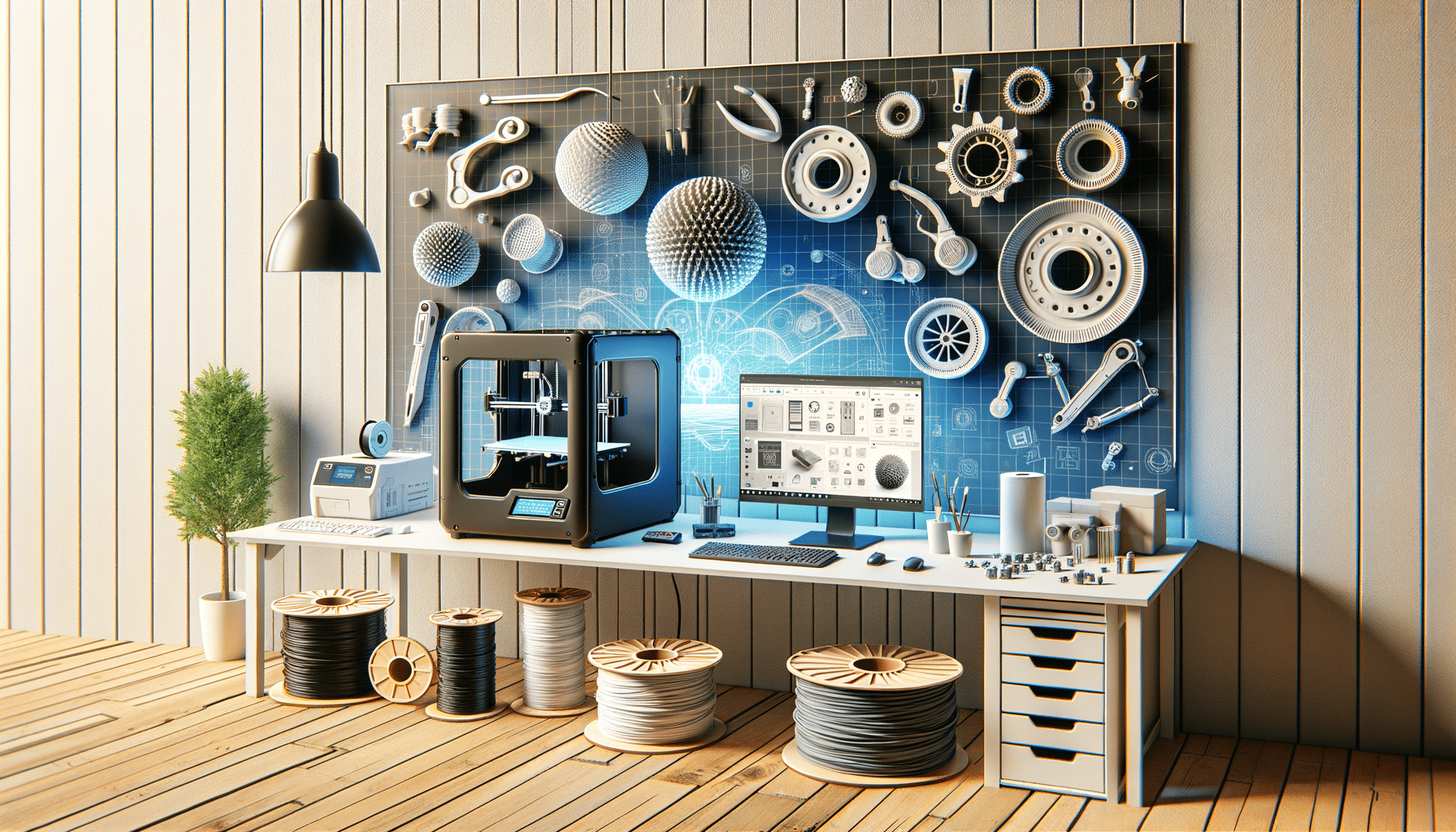
3D Printing for Beginners: A Comprehensive Guide
Introduction to 3D Printing
3D printing, a revolutionary technology, has transformed the way we create and manufacture objects. From prototyping to producing intricate designs, it offers endless possibilities. For beginners, understanding the basics of 3D printing is crucial to harnessing its full potential. This technology allows for the creation of three-dimensional objects from a digital file, using an additive process. By layering materials, it builds objects from the ground up, which is a departure from traditional subtractive manufacturing methods.
The relevance of 3D printing in today’s world cannot be overstated. It has applications across various industries, including healthcare, aerospace, and education. For hobbyists and professionals alike, it opens up a world of creativity and innovation. As a beginner, diving into the world of 3D printing might seem daunting, but with the right guidance, it becomes an exciting journey of discovery and learning.
Understanding the Basics of 3D Printing
At its core, 3D printing involves creating a physical object from a digital model. This is achieved through a process known as additive manufacturing, where layers of material are added successively to form the final object. Beginners should start by familiarizing themselves with the different types of 3D printers available, such as Fused Deposition Modeling (FDM) and Stereolithography (SLA). Each type has its own set of advantages and is suitable for different applications.
FDM printers are commonly used by beginners due to their affordability and ease of use. They work by melting a plastic filament and depositing it layer by layer. SLA printers, on the other hand, use a laser to cure liquid resin into solid parts, offering higher precision and detail. Understanding these basic concepts and technologies is the first step in mastering 3D printing.
To get started, beginners should also learn about the various materials used in 3D printing, such as PLA, ABS, and PETG. Each material has unique properties that affect the strength, flexibility, and finish of the printed object. By experimenting with different materials, beginners can gain insights into their specific applications and limitations.
Getting Started with 3D Printing
Starting your journey in 3D printing involves a few essential steps. First, acquire a 3D printer that suits your needs and budget. As a beginner, it’s wise to start with a user-friendly model that offers easy setup and operation. Next, familiarize yourself with 3D modeling software, which is used to create digital designs. Popular software options include Tinkercad, Blender, and Fusion 360, each offering unique features and capabilities.
Once you have your printer and software ready, the next step is to create or download a 3D model. Many online platforms offer free and paid 3D models, making it easy for beginners to find designs to print. After selecting a model, use slicing software to convert the digital design into a format that the printer can understand. This software generates the instructions for the printer, including the layer height, print speed, and support structures.
Finally, it’s time to print your design. Ensure that the printer is calibrated correctly and that the print bed is leveled. Load the material into the printer, and start the printing process. Be patient, as 3D printing can take several hours depending on the complexity of the design. With practice and experimentation, you’ll gain confidence and improve your skills in 3D printing.
Common Challenges and Troubleshooting Tips
While 3D printing is an exciting technology, beginners often encounter challenges along the way. One common issue is print adhesion, where the first layer of the print does not stick to the bed properly. This can be resolved by ensuring the print bed is clean and level, and by adjusting the bed temperature or using adhesives like glue sticks or painter’s tape.
Another challenge is print quality, which can be affected by factors such as incorrect settings or filament issues. To improve quality, check the printer’s settings, including layer height, print speed, and temperature. Regular maintenance of the printer, such as cleaning the nozzle and ensuring the filament is dry and free from tangles, can also enhance print results.
Beginners should also be aware of the potential for warping, especially when using materials like ABS. Warping occurs when the print cools unevenly, causing the edges to lift. Solutions include using a heated bed, enclosing the printer to maintain a stable temperature, and optimizing the cooling settings in the slicing software.
Exploring the Applications of 3D Printing
3D printing offers a wide range of applications that extend beyond simple hobbyist projects. In the medical field, it is used to create customized prosthetics and implants, offering patients personalized solutions that traditional methods cannot provide. In education, 3D printing is a powerful tool for teaching design and engineering concepts, allowing students to bring their ideas to life.
The aerospace industry utilizes 3D printing for rapid prototyping and producing lightweight components, while the fashion industry explores new possibilities in clothing and accessories design. Additionally, 3D printing has made significant strides in the construction industry, with the potential to create entire buildings using large-scale printers.
For beginners, exploring these applications can be inspiring and provide insight into the vast potential of 3D printing. By understanding the diverse uses of this technology, beginners can find their niche and develop projects that align with their interests and goals.
Conclusion: Embarking on Your 3D Printing Journey
As you embark on your 3D printing journey, remember that patience and practice are key to mastering this technology. Start with simple projects and gradually challenge yourself with more complex designs. By continually learning and experimenting, you’ll unlock the full potential of 3D printing and discover its endless possibilities.
Whether you’re a hobbyist looking to create unique objects or a professional seeking innovative solutions, 3D printing offers a world of opportunities. Embrace the learning process, and enjoy the creative freedom that comes with this remarkable technology.


